New York State
October 2007
Volume 23, Number 10
Medicaid Update
The official newsletter of the New York Medicaid Program
Eliot Spitzer, Governor
State of New York
Richard F. Daines, M.D. Commissioner
New York State Department of Health
Deborah Bachrach, Deputy Commissioner
Office of Health Insurance Programs
News for All Providers
Payment Error Rate Measurement Program
An upcoming fee-for-service Federal claim review may impact New York State Medicaid providers.
Omni 3750 POS Terminal Discontinuance
Important information regarding the Omni 3750 POS Terminal.
Seminar Schedule and Registration
Find out more about available billing training seminars!
Policy and Billing Guidance
Inpatient Admission from a Hospital Emergency Room.
Billing instruction for hospitals regarding proper submission of claims.
Requirements for Clinic Threshold Visit Claim Involving Physical Therapy
A reminder to clinic providers of the requirements for claims involving physical therapy.
Medicaid Coverage of Palivizumab (Synagis®) for Children at Risk for Respiratory Synctial Virus Infections.
Read this article to find out about Medicaid coverage of Palivizumab (Synagis®).
Coverage of Medical Supplies and Over-the-Counter Drugs by the Office of Mental Retardation and Developmental Disabilities
Certain facilities will be responsible for certain items.
Billing for Cardiography Procedures
Physicians, Nurse Practitioners and Ordered Ambulatory Providers are advised of acceptable billing modifiers.
New Claim Requirement for Orthodontic Services Provided to Nassau and Suffolk County Medicaid Enrollees.
Claim requirements for orthodontic services.
Provision of Sealants by Dental Hygienists
Advisory concerning the application of dental sealants by a dental hygienist.
Reduce Dispensing Validation System Cancellations
Pharmacy and durable medical equipment providers are urged to review this article!
Preferred Drug Program News
If you're wondering if a patient is subject to the Preferred Drug Program, then read this article!
Prescribers and Pharmacy Providers: Is Your Patient Covered by Medicare?
A reminder of Medicare drug coverage and how it may affect your patients.
Medicaid Fee-for-Service Enrollment Forms Have Changed!
Fee-for-service enrollment forms now include National Provider Identifier information.
The Vision Care Provider Manual Has Been Updated
A notice to opticians, optometrists and optical establishments of an update to the Vision Care provider manual.
eMedNY Website Highlight: Provider Update Forms for Electronic Transactions
Printable provider update forms are available on the eMedNY Website.
General Information
Attention Practitioners and Pharmacies: Update from the Bureau of Narcotic Enforcement
Information from the Bureau of Narcotic Enforcement.
The Great American Smokeout!
The American Cancer Society encourages all smokers to participate in this annual event to be held November 15, 2007.
National Asthma Guidelines Updated
Find out about important changes to the treatment of asthma.
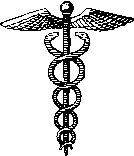
News for All Providers....
Payment Error Rate Measurement Program
Request for Medicaid Provider Documentation
Return to Table of Contents
BACKGROUND
The Centers for Medicare & Medicaid Services (CMS) implemented the Payment Error Rate Measurement (PERM) program to measure improper payments in the Medicaid Program and the State Children's Health Insurance Program (SCHIP).
PERM is designed to comply with the Improper Payments Information Act of 2002 (IPIA; Public Law 107-300). CMS is using a national contracting strategy, consisting of three contractors, to perform various steps in the process, including a medical review of selected Medicaid fee-for-service claims throughout Fiscal Year (FY) 2006.
In FY 2007, CMS expects to expand the program to include the measurement of eligibility and managed care improper payments in Medicaid and SCHIP. For more information, please go to:
Under PERM, reviews will be conducted in three areas:
- fee-for-service,
- managed care, and
- program eligibility for both the Medicaid Program and SCHIP.
CMS has not issued guidance for 2008 because they are still analyzing 2006 and 2007, and may make changes.
IMPACT ON NEW YORK STATE
New York State is one of 17 states included in the Federal Fiscal Year 2008 review of payments made from October 1, 2007 through September 30, 2008.
New York State has assigned PERM project oversight for Medicaid fee-for-service payments and managed care capitation payments to the Office of the Medicaid Inspector General (OMIG). PERM project oversight of eligibility for both the Medicaid and SCHIP programs is assigned to the Office of Health Insurance Programs.
THE PROCESS
CMS has contracted with Livanta, LLC to be their documentation/database contractor. Livanta, LLC will request documentation from a sample of providers to substantiate claims paid in FFY 2008. Livanta, LLC will forward the documentation to the review contractor, Health Data Insights.
The OMIG will request that the provider also send a copy of the documentation to their attention in order to confirm documentation is complete. This should eliminate a major problem that States involved in the program for FFY 2006 and 2007 have encountered.
The first requests for documentation by the federal contractor should be mailed to the providers in February 2008. If you are contacted, we ask for your cooperation and a timely response. Receipt of the documentation is essential to the success of the PERM program.
Requests and subsequent receipt/non-receipt of documentation will be tracked. Your timely response will facilitate the PERM process and minimize the need for further follow-up action by the OMIG.
Questions? Please contact the Payment Error Rate Measurement project staff at (518) 486-7153.
Attention
All Providers
Omni 3750 POS Terminal Discontinuance
Return to Table of Contents
VeriFone will discontinue manufacturing the Omni 3750 POS terminals by the end of December 2007, and will be replacing the Omni 3750 with the VX 570 terminal. Computer Sciences Corporation (CSC) will continue to accept orders for the 3750 until the Department is able to convert to the VX 570 or an alternative replacement.
eMedNY will continue to support the Omni 3750 terminals until further notice. The five-year warranties for terminals already purchased will continue to be in effect and service will continue to be provided by VeriFone, as per the current arrangement.
Medicaid eligibility verification will continue to be supported via the touch-tone telephone and the electronic Provider Assisted Claim Entry System (ePACES), a secure web-based program offered free of charge to enrolled providers.
To enroll in ePACES, contact the eMedNY Call Center at: (800) 343-9000.
The Department of Health (DOH) Mandatory Swiper program will remain in effect for Mandatory Swiper providers required to use a card swipe device.
More information will be forthcoming as the Department and CSC explore viable options for replacement of the Omni 3750.

Do You Have a Question About the Medicaid Program?
Please write to:
Your question will be forwarded to the appropriate policy contact for response and will be answered as soon as possible.
Seminar Schedule and Registration
Return to Table of Contents

- Do you have billing questions?
- Are you new to Medicaid billing?
- Would you like to learn more about ePACES?
If you answered YES to any of these questions, please consider registering for a Medicaid seminar. Computer Sciences Corporation (CSC) offers various types of seminars to providers and their billing staff. Many of the seminars planned for the upcoming months offer detailed information and instruction about Medicaid's web-based billing and transaction program - ePACES.
ePACES is the electronic Provider Assisted Claim Entry System which allows enrolled providers to submit the following type of transactions:
- Claims
- Eligibility Verifications
- Utilization Threshold Service Authorizations
- Claim Status Requests
- Prior Approval Requests
Professional providers such as physicians, nurse practitioners and private duty nurses can even submit claims in "REAL-TIME" via ePACES.
"Real Time"
Real-time means that the claim is processed within seconds and professional providers can get the status of a real-time claim, including the paid amount without waiting for the remittance advice.
Fast and easy seminar registration, locations and dates are available online at:
http://www.emedny.org/HIPAA/Provider_Training/Training.html
ePACES seminars are designed for specific provider types. Review the seminar descriptions carefully to identify the seminar appropriate to meet your training needs. Registration confirmation will be instantly sent to your email address.
If you are unable to access the Internet to register, you may also request seminar schedule and registration information through CSC's Fax on Demand at:
(800) 370-5809;
request document number 1003
for a list of seminars and registration information to be faxed to you.
CSC Regional Representatives look forward to meeting with you at upcoming seminars!
Questions about registration? Please contact the eMedNY Call Center at (800) 343-9000.
Policy and Billing Guidance............
Billing Instruction
for Hospitals
Inpatient Admission from a Hospital
Emergency Room
Return to Table of Contents
When a patient presents at the emergency room for treatment and is subsequently admitted, the hospital should submit only an inpatient claim to the Medicaid Program.
A bill for the emergency room service may not be billed in addition to the inpatient claim, regardless of whether the service in the emergency room occurred on the same day as the admission or on the previous calendar day.
Questions? Please contact the Division of Program Operations and Systems, Rate-Based Provider Bureau at:
(800) 342-3005 or (518) 474-3575.
Attention
- Article 28 Clinic Providers;
- Hospital-Based Outpatient Departments; and
- Freestanding Diagnostic and Treatment Centers
Requirements for Clinic Threshold Visit Claim Involving Physical Therapy
Return to Table of Contents

Physical therapy must be provided by a physical therapist licensed and currently registered with the New York State Education Department in order to bill a clinic threshold visit.
It is unacceptable to bill a clinic threshold visit for therapy provided by a physical therapy assistant/aide.
Clinic Threshold Visit Policy Reminder
To bill a clinic threshold visit, the patient must be seen by a recognized practitioner such as a:
- Physician;
- Registered physician assistant;
- Nurse practitioner;
- Licensed midwife;
- physical, occupational, or speech therapist; or
- psychologist; etc.
Questions? Please call the Bureau of Policy Development and Coverage at (518) 473-2160.
Attention
Practitioners and
Pharmacy Providers
Medicaid Coverage of Palivizumab (Synagis®)
for Children at Risk for Respiratory Syncytial Virus Infections
Return to Table of Contents
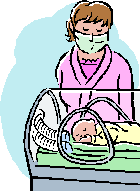
Palivizumab is an intramuscular injection used as prophylaxis for respiratory syncytial virus (RSV). It is used in certain high-risk children with histories of prematurity and chronic lung disease (CLD) (formerly known as bronchopulmonary dysplasia).
RSV is a leading cause of bronchiolitis and pneumonia in infants. Palivizumab should be administered at the start of the season, typically November, and monthly throughout the RSV season, ending in April.
GUIDELINES
The following are guidelines for identifying children who should be considered for RSV prophylaxis, adapted from the indications for use published by the American Academy of Pediatrics:

- Infants and children less than 24 months of age with CLD who have required medical therapy for CLD within the past six months before the anticipated start of the RSV season.
- Neonates born at greater than 28 weeks and less than 32 weeks gestation with or without CLD who are less than six months of age at the start of the RSV season.
- Neonates born at 28 weeks of gestation or less with or without CLD and who are less than 12 months of age at the start of the RSV season.
- Neonates born between 32 and 35 weeks gestation with or without CLD who are less than six months of age at the start of the RSV season only if two or more additional risk factors are present including: school-age siblings, child-care attendance, exposure to environmental air pollutants, congenital abnormalities of the airways or severe neuromuscular disease.
- Children who are 24 months of age or younger with hemodynamically significant cyanotic and acyanotic congenital heart disease.
Palivizumab should not be used for the treatment of RSV disease.
REIMBURSEMENT AND PAYMENT
Medicaid reimburses for Palivizumab when billed by Medicaid-enrolled physicians, nurse practitioners and pharmacy providers.
Practitioner Billing
When billing the cost and administration of Palivizumab, physicians and nurse practitioners should:
- Use code 90749 (unlisted vaccine/toxoid), and include a copy of the invoice attached to the claim.
- Describe the product name and total dose administered on the claim form.
- Insert the acquisition cost plus a two-dollar ($2.00) administration fee in the "amount charged" field.
For more information on practitioner billing, see the Physician Provider Manual, Procedure Code and Fee Schedule page 109, version 2006-1 (4/1/06), available at:
http://www.emedny.org/ProviderManuals/Physician/index.html
Pharmacy Billing
Pharmacy providers should enter the Palivizumab NDC number into the online billing system as they would for any prescription pharmaceutical.
For further information on Medicaid coverage guidelines of Palivizumab, please contact:
for Physician providers: (518) 473-2160;
for Pharmacy providers: (518) 486-3209.
For billing questions, please contact Computer Sciences Corporation at:
(800) 343-9000.
References:
- American Academy of Pediatrics, Committee on Infectious Diseases and Committee on Fetus and Newborn. Revised Indications for the Use of Palivizumab and Respiratory Syncytial Virus Immune Globulin Intravenous for the Prevention of Respiratory Syncytial Virus Infection. Pediatrics. 2003;112:1442-1446.
- American Academy of Pediatrics, Committee on Infectious Diseases and Committee on Fetus and Newborn. Prevention of Respiratory Syncytial Virus Infections: Indication for the Use of Palivizumab and Update on the Use of RSV-IGIV. Pediatrics. 1998; 102:1211-1216.
- McEvoy, G.K. (Ed.). (2007). American Hospital Formulary Service Drug Information. (pp. 766-769). Bethesda, MD: American Society of Health System Pharmacists.
- Meissner H.C., et al. Prevention of RSV Infection in High Risk Infants: Consensus Opinion on the Role of Immunoprophylaxis with Palivizumab, a Humanized Respiratory Syncytial Virus Monoclonal Antibody for Prevention of Respiratory Syncytial Virus Infection in High Risk Infants. Pediatric Infectious Disease Journal. 1999; 18 (3):223-231.
- Synagis® (palivizumab) prescribing information. Medimmune, Inc., Rev. Date Feb. 28, 2007.
- United States Pharmacopeia-Drug Information. (2007). Vol. 1. Drug Information for the Healthcare Professional (27th ed., pp. 2256-2258). Greenwood Village, CO: Thomson Micromedex.
(Rev. 8/07)
Attention
Office of Mental Retardation and Developmental Disabilities
- Certified Intermediate Care Facilities for the Developmentally Disabled;
- Supervised Individualized Residential Alternatives
- Supervised Community Residences; and
- Speciality Hospitals
Coverage of Medical Supplies and Over-the-Counter Drugs
by the Office of Mental Retardation and Developmental Disabilities
Return to Table of Contents
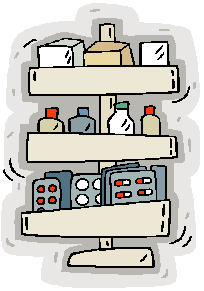
Starting with purchases made on or after January 1, 2008, each Office of Mental Retardation and Developmental Disabilities (OMRDD) certified:
- Intermediate Care Facility for the Developmentally Disabled (ICF/DD);
- Supervised Individualized Residential Alternative (IRA);
- Supervised Community Residence (CR); and,
- Specialty Hospital.
will be fiscally responsible for the medical supplies identified below:
- Medical gloves,
- Underpads and Diapers, and
- Over-the-counter drugs (except insulin).
Separate Medicaid billing for these medical supplies and over-the-counter drugs (except insulin) will be prohibited for any individual residing in an ICF/DD, Supervised IRA, Supervised CR or OMRDD Specialty Hospital.
The residential provider is also responsible for purchasing these supplies for the resident's use at a day program or summer camp.
On June 19, 2007, OMRDD sent letters explaining the details of this financial responsibility to all providers operating OMRDD certified ICFs/DD, Supervised IRAs, Supervised CRs and OMRDD Specialty Hospitals.
Questions? Please contact Jack Anderton of OMRDD at (518) 402-4339, or by email at: John.Anderton@omr.state.ny.us.
Attention
- Physicians
- Nurse Practitioners
- Ordered Ambulatory Providers
Billing for Cardiography Procedures
Return to Table of Contents
The Cardiography section of the Physician, Nurse Practitioner and Ordered Ambulatory Provider Fee Schedules, available online at http://www.emedny.org/ProviderManuals/index.html includes codes for various types of cardiac studies, including ECGs (electrocardiograms), stress tests and Holter monitoring.
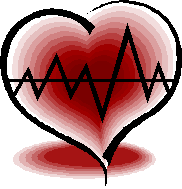
The series for each type of study begins with a global code, (e.g., 93000, 93015, 93224, etc.), and is followed by individual codes that break out the components separately, (e.g., 93005, 93016, 93271, etc.).These codes are not add-on codes.
Effective dates of service on or after October 1, 2007, when coding a cardiac study within ranges 93000 through 93018, or 93040 through 93272, the use of modifiers 26 (professional component) and TC (technical component) will no longer be permitted.
- When rendering the complete service, providers must bill the appropriate global code.
- For example: 93015 for complete cardiovascular stress test.
- When rendering separate components of the service, bill only for the individual service(s) provided without a modifier. For example:
- 93016 for tracing only; or
- 93018 for physician interpretation only without written report; or
- 93017 and 93018 for physician supervision and interpretation as well as written report.
Cardiography studies billed with modifiers 26 or TC will result in claims being denied for eMedNY Edit 00927: Modifier inappropriate for procedure code; HIPAA adjustment reason code CO-4 (Contractual Obligation; the procedure code is inconsistent with modifier).
Denied claims may be timely resubmitted with the appropriate code(s) for the service(s) rendered without a modifier.
Questions? Please call the Division of Program Operations and Systems, Medical Pended Claims Unit at: (800) 342-3005; or for out-of-state callers (518) 474-3575.
New Claim Requirement for Orthodontic Services Provided to Nassau and Suffolk County Medicaid Enrollees
Return to Table of Contents

Effective for dates of service on or after January 1, 2008, all claims for orthodontic services, (procedure codes D8070, D8080, D8090, D8670 or D8680), provided to Nassau County (District 28) and Suffolk County (District 47) enrollees MUST have the 11-digit prior approval number issued by the Department of Health entered in Field 19 on the claim form.
If the prior approval number does not appear, the claim will be denied.
Questions? Please call the Division of Program Operations and Systems, Dental Review Unit, at (800) 342-3005, option #2.
Attention
Article 28 School-Based
Dental Health Clinics
Provision of Sealants by Registered Dental Hygienists
Return to Table of Contents
This advisory is being issued to address questions about the coverage for dental sealants applied by a registered dental hygienist (RDH) in an approved Article 28 school-based dental health center.
Medicaid covers dental sealants to permanent first and second molars of Medicaid eligible children between the ages of 5 and 15 years, inclusive.
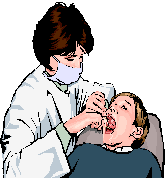
Under Departmental Regulation 10 NYCRR 86-4.9, such a service by a RDH in a clinic setting constitutes a Medicaid billable threshold service if done pursuant to an individual order/treatment plan from a clinic dentist.
Article 28-licensed clinics with approved school-based dental health centers listed on their operating certificate are allowed to have RDHs apply sealants to the teeth of Medicaid eligible children in a school setting under the general supervision of a licensed dentist using a generally applicable protocol.
The school-based dental health clinic protocol must specify that all children of a certain age should have such dental sealants applied, without requiring individualized orders from the dentist. Direct supervision of the dental hygienist is not required, since there is no professional medical/dental judgment needed to determine which children should or should not receive the sealants.
Questions? Please call the School-Based Health Center-Dental Coordinator, Bureau of Dental Health at: (518) 474-1961.
Attention
Pharmacy and DME Providers
Reduce Dispensing Validation System Cancellations
Return to Table of Contents
- Submit a Dispensing Validation System (DVS) request only when you are sure the patient is ready to receive the items.
- Consistently verify eligibility and other coverage information before requesting a DVS.
- For patients with managed care plan coverage, most Durable Medical Equipment (DME) items are covered by the plan and no DVS authorization will be necessary as the claim will not be billed to Medicaid.
- Verifying eligibility will also alert providers if the patient has another primary third party insurance that may be responsible to pay the claim.
- Ensure that the correct ordering information (license/Medicaid identification number) has been entered.
- Ensure the proper modifier and item codes have been entered.
If a provider does obtain an unwarranted DVS authorization, cancellations for pharmacy and medical supply items must be performed within 24 hours. Authorizations for DME, prescription footwear and orthotic/prosthetic devices may be cancelled up to 90 days.
DVS Cancellation Process
OMNI Verifone Terminal Users
Use Transaction Type 4 to cancel the last DVS request entered into the terminal and be sure to enter the correct Medicaid client identification number.
ePACES Users
- Click on the DVS Responses in the left-hand menu to display the DVS Activities Worklist.
- Use the search criteria to find the DVS you wish to cancel.
- Click the cancel button in the far right-hand column. If the request does not have a cancel button, that DVS can not be canceled through ePACES. (See instructions for "DVS Cancellation Via Fax" below.)
- Confirm the cancellation request.
- A new "Cancel Request" will be added to the list. The result column will displays the value "A6" with the message "modified" to indicate the DVS has been canceled.
DVS Cancellation Process via Fax
In cases where a provider can not cancel the DVS authorization via one of the above methods, a DVS Cancellation Request Form may be obtained by calling the eMedNY Call Center at (800) 343-9000. The request may be submitted via fax and you will be notified when the cancellation is complete via telephone.
Preferred Drug Program News
Return to Table of Contents
How do I know which of my patients are subject to the Medicaid Preferred Drug Program (PDP)?
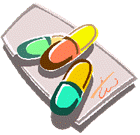
All Medicaid enrollees who receive pharmacy services through the fee-for-service program are subject to the PDP. This includes Medicaid Managed Care enrollees. Prescribers ordering prescription drugs for these patients should consult the Medicaid Preferred Drug List (see below).
Family Health Plus and Child Health Plus enrollees receive their pharmacy services through their managed care plan and are not subject to the Medicaid PDP. Their health plans may have pharmacy services requirements that differ from Medicaid.
Still unsure?
The Medicaid Eligibility Verification System (MEVS) allows providers to verify client eligibility prior to providing services.
For information on how to obtain eligibility information or if you have questions about any of the messages/codes received in the response to your inquiry, please refer to the MEVS Provider Manual or the eMedNY Pro-DUR ECCA Provider Manual.
Both manuals are available online at:
http://www.emedny.org/ProviderManuals/Pharmacy/index.html
or
by calling Computer Sciences Corporation at (800) 343-9000.
Providers with questions about eligibility for Child Health Plus enrollees should contact their patient's health plan.
The complete Medicaid Preferred Drug List and Quick-list can be found at:
http://www.health.state.ny.us/ or https://newyork.fhsc.com/ or http://www.emedny.org
To obtain prior authorization for a non-preferred drug, contact the clinical call center at:
(877) 309-9493
and follow the appropriate prompts.
Requests for prior authorization of non-preferred drugs may also be faxed to:
(800) 268-2990.
Faxed requests may take up to 24 hours to process.
For clinical concerns or Preferred Drug Program questions, contact (877) 309-9493.
For billing questions, call Computer Sciences Corporation at (800) 343-9000.
For Medicaid pharmacy policy and operations questions, call (518) 486-3209.
Attention
Prescribers and
Pharmacy Providers
Is Your Patient Covered by Medicare?
Return to Table of Contents
Medicare provides prescription drug coverage under Part A, Part B and Part D.
Drugs Covered Under Medicare Part A
Medicare Part A covers drugs that are part of an inpatient treatment during a covered stay in a hospital or skilled nursing facility. Generally, Part A does not pay for outpatient prescription drugs.
Drugs Covered Under Medicare Part B
Medicare Part B covers a limited number of drugs. These drugs are usually given as part of a doctor's service, or drugs that are not self-administered. Coverage is usually limited to drugs that are given by infusion or injection.
Medicare must be billed first. Medicaid can be billed for the Part B deductible and coinsurance related to the administration of these drugs.
Part B also covers the following drugs:
- Flu Shot: Part B covers one flu shot per flu season in the fall or winter. There is no patient out-of-pocket liability for this service.
- Pneumococcal Shot: Part B covers the pneumococcal shot when ordered by a doctor. Most people only need this preventive shot once in their lives. There is no patient out-of-pocket liability for this service.
- Hepatitis B Shot: Part B covers this preventive service only for people at medium or high risk for Hepatitis B.
- Other Vaccines and Shots: Part B covers some other vaccines, such as a tetanus shot, when they are related to the treatment of an injury or illness.
- Durable Medical Equipment Supply Drugs: Part B covers some drugs used in infusion pumps and nebulizers when considered reasonable and necessary.
- Injectable Drugs: Part B covers most injectable drugs administered by a licensed medical practitioner if the drug is considered reasonable and necessary for treatment and isn't usually self-administered. This includes:
- Antigens: Part B covers antigens if they are prepared by a doctor and given by a properly-instructed person, (who could also be the patient themself) under doctor supervision.
- Erythropoiesis-Stimulating Agents: Part B covers erythropoietin by injection for people who have ESRD and need this drug to treat anemia.
- Blood Clotting Factors: Part B covers clotting factors for people with hemophilia who give themselves the drug by injection.
- Immunosuppressive Drugs: Part B covers immunosuppressive drug therapy for transplant patients if the transplant was paid for by Medicare (or by private insurance that paid as a primary payer to the patient's Part A coverage) in a Medicare-certified facility.
- Osteoporosis Drugs: Part B covers an injectable drug for women with osteoporosis who meet the criteria for the Medicare home health benefit and have a bone fracture that a doctor certifies was related to post-menopausal osteoporosis.
- Oral Cancer Drugs: Part B covers some cancer drugs taken by mouth if the same drug is available in injectable form. Currently, the oral cancer drugs that Part B covers include:
- Capecitabine (brand name Xeloda)
- Cyclophosphamide (brand name Cytoxan)
- Methotrexate
- Temozolomide (brand name Temodar)
- Busulfan (brand name Myleran)
- Etoposide (brand name VePesid)
- Melphalan (brand name Alkeran)
Part B may cover new cancer drugs as they become available. - Oral Anti-Nausea Drugs: Part B covers oral anti-nausea drugs used as part of an anti-cancer chemotherapeutic regimen when the drugs are administered within 48 hours of the chemotherapy. They must be used as a full therapeutic replacement for intravenous anti-nausea drugs.
- Parenteral and Enteral Nutrition: Part B covers parenteral nutrients as well as enteral nutrients for people who can't absorb nutrition through their intestinal tracts.
- IV Immune Globulin Provided in the Home: Part B covers intravenous immune globulin (IVIG) for people with a diagnosis of primary immune deficiency disease when a doctor considers the treatment medically appropriate.
- For the Remainder of 2007, Medicare Part B covers the administration fee in connection with Part D covered vaccines. In 2008, the administration fee in connection with Part D covered vaccines will be covered by the Medicare Part D plan.
For more information about Part B coverage, please refer to:
Drugs Covered Under Medicare Part D
Medicare Part D drug plans cover generic and brand-name drugs listed on the Part D plan formulary. Medicare drug plans must also cover all drugs, with a few exceptions, in six key categories: antidepressants, antipsychotics, anticonvulsants, antiretrovirals, immunosuppressants, and antineoplastics.
Medicare Part D also covers medically necessary vaccines that aren't covered by Part B. Enrollees or their providers may need to contact the Part D plan for information about coverage of the vaccine needed. In 2007, administration of the Part D covered vaccine can be billed to Medicare Part B. Beginning in 2008, the Part D plan will cover both the vaccine and the fee to administer it.
Part D cannot pay for drugs when they are covered under Medicare Part A or Part B. Plans may rely on physician information included with the prescription, such as diagnosis information (e.g., to determine if the prescription is related to a Medicare covered transplant) or location of administration (e.g., to determine if the prescription is being dispensed for a beneficiary in a nursing home) to assist in the accurate identification and distinction of drugs covered under Medicare Part B or Part D.
Additionally, the following drugs are excluded from standard coverage under Part D, and can be billed directly to Medicaid:
- Benzodiazepines;
- Barbiturates;
- Select non-prescription drugs; and
- Select prescription vitamins and minerals.

Weekly influenza activity is reported online. Go to:
http://www.health.state.ny.us/diseases/communicable/influenza/surveillance.htm
Medicaid Fee-for-Service Enrollment Forms Have Changed!
Return to Table of Contents
The New York State Medicaid Fee-for-Service Enrollment and Maintenance Form Packets have been updated to include National Provider Identifier (NPI) information.

The forms were posted to the eMedNY website in September 2007. Computer Sciences Corporation will accept both the older forms and the new "NPI-updated" forms through October 14, 2007.
Any non "NPI-updated" forms received on or after October 15, 2007 will be returned to the provider.
The forms can be located by clicking on the following link:
http://www.emedny.org/info/ProviderEnrollment/index.html
ATTENTION
Return to Table of Contents
Opticians, Optometrists and Optical Establishments
The policy quidelines of the Vision Care Services Provider Manual have been updated to reflect current policy for vision care services. Changes announced in the August 2004 and the October 2004 editions of the Medicaid Update are now included in the Manual.
To stay informed, please go to the website at
http://www.emedny.org/ProviderManuals/VisionCare/index.html
Paper copies can be requested by calling Computer Sciences Corporation at
(800) 343-9000.
Specific questions regarding the application of this policy can be answered by calling:
(518) 473-2160.
eMedNY Website
Monthly Highlights
This Month's Highlight:
PROVIDER UPDATE FORMS FOR ELECTRONIC TRANSACTIONS
Return to Table of Contents
Please note that updated National Provider Identifier forms are available online and may be submitted now.
Older versions of the forms will be accepted until October 14, 2007.
See the article below.
Online at http://www.emedny.org/info/ProviderEnrollment/index.html are links to printable forms providers may need to update information or sign-up for electronic options, as well as Fee-For-Service enrollment forms, detailed information regarding the purpose for each form and instructions for form completion.
The tables below give a description of the maintenance forms related to New York State Medicaid Program's "electronic options":
| FORM NAME | PURPOSE OF FORM |
|---|---|
| Electronic/Paper Transmitter Identification Number (TSN/Provider) - ETIN | This form and the attached Certification Form need to be submitted before a provider can submit electronic claims or paper UB-04 forms for rate-based providers. |
| Certification Statement for Provider Billing Medicaid | This form is required to establish an ETIN and on an annual basis for all providers submitting electronic transactions. Renewal notices are sent to providers both at 45 and 30 days prior to the annual expiration. |
| Security Packet B | This form is required to establish a User ID and Password to submit electronic claims via FTP or the Electronic Gateway (BBS). |
| Electronic Remittance Request Form | This form is used to request electronic (HIPAA-compliant) remittances to be delivered to a provider's eXchange or FTP account. Electronic remittances are delivered 2 1/2 weeks faster than paper remittances. |
| Electronic Prior Approval Request Form | This form is used to receive electronic prior approval rosters via eXchange. The rosters are delivered in a printable PDF format so no programming or special software is required. |
| Electronic Funds Transfer (EFT) Enrollment Form | This form is used to have your Medicaid payments transferred electronically to your bank account. |
| Pended Claims Recycle Request Form | This form gives providers a choice about how often "pending" claims are reported on the weekly remittance. |
| Request to Disaffiliate/Delete an ETIN | This form is used to terminate a provider's affiliation with an ETIN used for electronic billing. Once terminated, claims will no longer be accepted when submitted with that ETIN. |
Please take the time to visit your website and become familiar with the information and forms available to you.
Questions? Please call the eMedNY Call Center at: (800) 343-9000.
General Information....
ATTENTION
Practitioners & Pharmacies
Update from the Bureau of Narcotic Enforcement
Return to Table of Contents
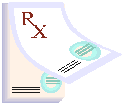
Section I: Information for Practitioners
Oral Prescriptions for Controlled Substances
The controlled substance law and regulations authorize only a practitioner to orally prescribe a controlled substance to a pharmacist. Nurses or other office personnel are not authorized to phone in a controlled substance prescription to a pharmacist.
Only oral prescriptions for controlled substances that are phoned in by a practitioner are valid.
No Refills on Schedule II or Benzodiazepine Prescriptions
Because an official New York State prescription form must be used when issuing written prescriptions for both controlled and non-controlled substances, the newly designed official New York State prescription forms contain an indication for a practitioner to authorize refills of the prescription.
However, under the controlled substance law and regulations, prescriptions for schedule II controlled substances and benzodiazepines may not be refilled.
Note: Anabolic steroids and testosterone are classified as schedule II controlled substances in New York State, and prescriptions for these drugs may not be refilled.
Indicating Maximum Daily Dose
In addition to containing the specific directions for use and all other information required by the controlled substance law and regulations, all prescriptions for controlled substances must indicate the maximum daily dose (MDD) of the prescribed drug.
Internet Prescribing of Controlled Substances
Section 80.63 of the controlled substance regulations requires a practitioner to physically examine a patient prior to initially prescribing a controlled substance.
Issuing a prescription for a controlled substance solely on the basis of a questionnaire or other medical history submitted to a practitioner over the Internet does not meet the requirement of a physical examination or establish a legitimate practitioner-patient relationship and is not a valid prescription.
After the initial physical examination of the patient, the frequency and need for future examinations prior to prescribing a controlled substance for the same acute or chronic condition will be made by the practitioner utilizing generally accepted medical standards.
Practitioner's Handwritten Signature Required
All written prescriptions, for both controlled and non-controlled substances, are required to contain the handwritten signature of the prescribing practitioner.
Prescriptions containing a stamped or computer-generated practitioner's signature do not meet the requirement and are not valid for dispensing.
Section II: Information for Pharmacies
Oral Prescriptions for Controlled Substances
The controlled substance law and regulations authorize only a practitioner to orally prescribe a controlled substance to a pharmacist. Nurses or other office personnel are not authorized to phone in a controlled substance prescription to a pharmacist.
Only oral prescriptions for controlled substances that are phoned in by a practitioner are valid for dispensing.

Dispensing Controlled Substances 'For Office Use' Prohibited
The Public Health Law requires a practitioner to obtain controlled substances for office use only from a manufacturer or distributor licensed by the Bureau of Narcotic Enforcement (BNE).
A pharmacy may not supply controlled substances to a practitioner for office use unless that pharmacy is licensed by BNE as a manufacturer or distributor.
Controlled substance prescriptions issued "For Office Use" are not valid for dispensing by a pharmacy, since such prescriptions must be issued solely for a specific patient.
Official New York State Prescription Security Awareness
Pharmacists should utilize the built in security features of an official New York State prescription to verify its authenticity for dispensing. The security features include the following:
- The 'Pharmacist Test Area' on the front of the prescription is heat-sensitive ink and the color will change from blue to light blue or transparent when rubbed.
- The word 'VOID' will appear on the prescription if it has been copied, scanned, or physically or chemically erased.
- The 'Secure Standard Register' on the back of the prescription is heat-sensitive ink and the color will change from orange to yellow when rubbed.
Pharmacists should also check the clarity of the official prescription's serial number and bar code and report any suspicious prescription to the BNE office in your region. A list of official prescriptions reported as lost or stolen is updated daily and is posted on the BNE web site at:
www.nyhealth.gov/professionals/narcotic
Pharmacy Updates Now Issued Quarterly
BNE will now be issuing its 'Controlled Substance and Official Prescription Program Update' on a quarterly basis. The quarterly updates will replace the monthly updates that were previously issued to pharmacies. Pharmacists can continue to view the updates on the BNE web site.
The controlled substance law and regulations may be viewed online at: www.nyhealth.gov/professionals/narcotic. Pharmacists with questions about official prescriptions or controlled substances may contact the Bureau of Narcotic Enforcement at (866) 811-7957 or e-mail at: narcotic@health.state.ny.us
Fraud impacts all taxpayers.
Return to Table of Contents
Do you suspect that an enrollee or a provider has engaged in fraudulent activities?
Please call:
1-877-87FRAUD
Your call will remain confidential.
THE GREAT AMERICAN SMOKEOUT
NOVEMBER 15, 2007
Return to Table of Contents
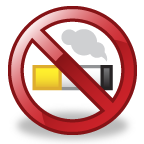
It is never too late to stop smoking. The American Cancer Society's volunteers and staff hold the Great American Smokeout every year to help smokers quit tobacco use for at least one day. More people quit smoking on this day than any other day of the year. Health care professionals have the ability to help patients stop tobacco usage.
The Great American Smokeout is an opportunity for Americans to renew their commitment to a tobacco-free environment for themselves and family members.
Smoking is an addiction and health care professionals can be very influential when they suggest smoking cessation to their patients.
Please take time to mention this event as the first day towards a healthier lifestyle.
Encourage your patients to take part in the
Great American Smokeout
on November 15, 2007.
For more information on tobacco cessation, please contact:
NYS Smokers Quitline (866) NY-QUITS (866-697-8487)
American Cancer Society 1-800-227-2345
American Lung Association 1-800-586-4872
The New York State Medicaid Program is committed to assisting all Medicaid enrollees who would like to stop tobacco use.
Medicaid covers both prescription and over-the counter (OTC) smoking cessation agents.
DID YOU KNOW? --- The New York State Smokers' Quitline provides FREE services and materials to health care providers. Call the NYS Smokers Quitline at 1-866-697-8487 to find out about:
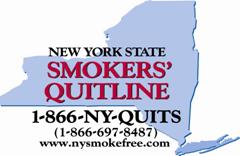
- Printed materials including cessation guides, posters and Quitline handout cards.
- Health Care Provider Quit Kit, which includes office materials, Fax-To-Quit program forms, materials order form and more.
- Free Online Cessation CME program for physicians.
- Referrals to the 19 New York State funded Cessation Centers (located throughout NYS) offering health provider training and support.
National Asthma Guidelines Updated
Return to Table of Contents
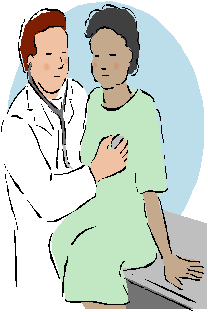
The National Asthma Education and Prevention Program (NAEPP) issued the first comprehensive update in a decade of clinical guidelines for the diagnosis and management of asthma.
The guidelines emphasize the importance of asthma control and introduce new approaches for monitoring asthma. Updated recommendations for managing asthma include:
- an expanded section on childhood asthma (with an additional age group),
- new guidance on medications,
- new recommendations on patient education in settings beyond the physician's office and
- new advice for controlling environmental factors that can cause asthma symptoms.
Expert Panel Report 3 (EPR-3)
Guidelines for the Diagnosis and Management of Asthma-Full Report, 2007 provides guidance for selecting treatment based on a patient's individual needs and level of asthma control.
The guidelines emphasize that while asthma can be controlled; the condition can change over time and differs among individuals and by age groups.
EPR-3 builds upon complete asthma guidelines issued in 1991 and 1997 and an update on selected topics released in 2002. The guidelines focus on four components of asthma care:
- measures to assess and monitor asthma,
- patient education,
- control of environmental factors and
- other conditions that can worsen asthma, and medications.
Key Features and Changes to Asthma Care
Key features and changes to these four components of asthma care include:
Assessment and Monitoring
EPR-3 takes a new approach to assessing and monitoring asthma by using multiple measures of the patient's level of current impairment (frequency and intensity of symptoms, low lung function, and limitations of daily activities) and future risk (risk of exacerbations, progressive loss of lung function, or adverse side effects from medications).
The guidelines stress that some patients can still be at high risk for frequent exacerbations even if they have few day-to-day effects of asthma.
Patient Education

EPR-3 confirms the importance of teaching patients skills to self-monitor and manage asthma and to use a written asthma action plan, which should include instructions for daily treatment and ways to recognize and handle worsening asthma. New recommendations encourage expanding educational opportunities to reach patients in a variety of settings, such as pharmacies, schools, community centers, and patients' homes.
A new section addresses the need for clinician education programs to improve communications with patients and to use system-wide approaches to integrate the guidelines into health care practices.
Control of Environmental Factors and Other Conditions that can Affect Asthma
ERP-3 describes new evidence for using multiple approaches to limit exposure to allergens and other substances that can worsen asthma; research shows that single steps are rarely sufficient.
EPR-3 also expands the section on other common conditions that asthma patients can have and notes that treating chronic problems such as:
- rhinitis and sinusitis,
- obstructive sleep apnea,
- gastroesophageal reflux,
- stress,
- overweight or obesity, and
- depression
may improve asthma control.
Medications
EPR-3 continues the use of a stepwise approach to control asthma, in which medication doses or types are stepped up as needed and stepped down when possible. Treatment is adjusted based on the level of asthma control.
The stepwise asthma management charts are revised and expanded to specify treatment for three age groups:
- 0-4 years,
- 5-11 years and
- 12 years and older.
The 5-11 age group, was added (earlier groups combined this group with adults) as a result of new evidence on medications for this age group and emerging evidence that suggests that children may respond differently than adults to asthma medications.
Recommendations on medications are updated to reflect the latest evidence on effectiveness and safety. EPR-3 reaffirms that patients with persistent asthma (e.g., patients who have symptoms more than twice a week during the day or more than twice a month at night) need both long-term control medications to control asthma and prevent exacerbations, as well as quick relief medications for symptoms as needed.
The Medicaid Program reimburses for medically necessary care, services, and supplies needed in the diagnosis and treatment of Asthma.
EPR-3 also reaffirms that inhaled corticosteroids are the most effective long-term control medication across all age groups. EPR-3 includes new recommendations on treatment options such as:
The Medicaid Program reimburses for medically necessary care, services, and supplies needed in the diagnosis and treatment of Asthma>
- leukotriene receptor antagonists and cromolyn for long term control;
- long acting beta agonists as adjunct therapy with inhaled corticosteroids;
- omalizumab for severe asthma; and
- albuterol, levalbuterol, and corticosteroids for acute exacerbations.
EPR-3 also describes areas of current research to improve asthma management, such as new ways for monitoring asthma control (for example, tests using patient's sputum and exhaled air) and tailoring treatment based on the particular characteristics of a patient's asthma and the patient's genetic makeup.
NAEPP is developing tools and partnerships to improve adoption of the guidelines, including a Summary Report of EPR-3 to be released before the end of the year. A NAEPP appointed independent panel of experts and guide line end users is developing an action plan to improve guidelines implementation.
The New York State Department of Health Asthma Program and Office of Health Insurance Programs will reconvene the New York State Consensus Asthma Guideline Expert Panel this fall to update the statewide asthma guidelines based upon these new recommendations.
Questions? Please contact the Bureau of Policy Development and Coverage at (518) 474-5187.
Resources:
New York State Asthma
http://www.health.state.ny.us/statistics/ny_asthma/index.htm
Guidelines for the Diagnosis and Management of Asthma
http://www.nih.gov/guidelines/asthma/index.htm
National Asthma Education and Prevention Program
http://www.nhlbi.nih.gov/abput/naepp.index.htm
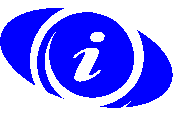
PROVIDER SERVICES
Return to Table of Contents
Missing Issues?
The Medicaid Update, now indexed by subject area, can be accessed online at the New York State Department of Health website:
http://www.health.state.ny.us/health_care/medicaid/program/update/main.htm
Hard copies can be obtained upon request by emailing: medicaidupdate@health.state.ny.us
Questions about an Article?
For your convenience each article contains a contact number for further information, questions or comments.
Questions about billing and performing EMEVS transactions?
Please contact CSC Provider Services at: (800) 343-9000.
Provider Training
To sign up for a provider seminar in your area, please enroll online at:
http://www.emedny.org/training/index.aspx
For individual training requests, call (800) 343-9000 or email:
emednyproviderrelations@csc.com
Enrollee Eligibility
Call the Touchtone Telephone Verification System at any of the numbers below:
(800) 997-1111 (800) 225-3040
(800) 394-1234.
Address Change?
Questions should be directed to CSC at: (800) 343-9000.
Fee-for-service Provider Enrollment
A change of address form is available at:
http://www.emedny.org/info/ProviderEnrollment/index.html
Rate-based/Institutional Provider Enrollment
A change of address form is available at:
http://www.emedny.org/info/ProviderEnrollment/index.html
Comments and Suggestions Regarding This Publication?
Please contact the editor, Timothy Perry-Coon, at:
medicaidupdate@health.state.ny.us
Medicaid Update is a monthly publication of the New York State Department of Health containing information regarding the care of those enrolled in the Medicaid Program.